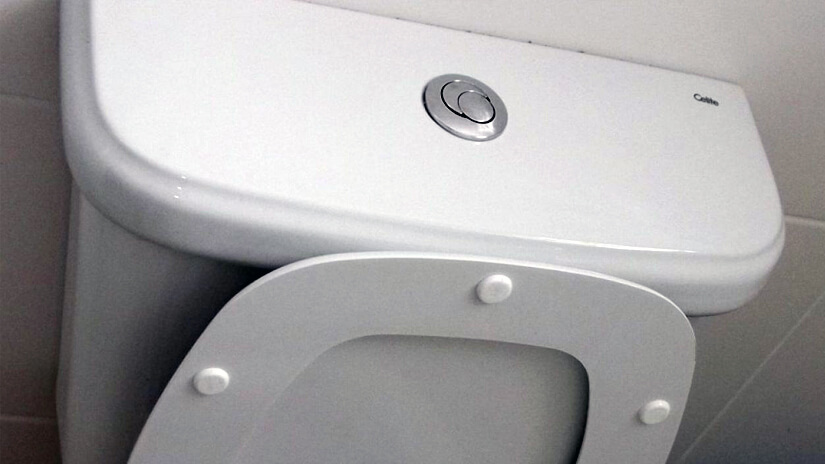Thinking about swapping out your toilet? Consider how you’ll tackle it—DIY or hiring a pro?
Buying a toilet might seem as simple as scrolling through a catalogue and picking your favourite. It is, if you’ve checked out your options and done your homework on what’s right for your needs.
Regarding the size of your property, if your bathroom is not large enough, you could maximise your space with a wall-hung toilet. Dual flush toilets are your best option for environmental considerations, saving water, and easing your monthly water bills. More types of flushing mechanisms will be discussed below.
Choose flush toilets if you don’t want to spend more on the extra pipework. They’re the perfect bet due to their mobility. Your best option will be to purchase toilets with similar dimensions to your old ones. This way, you can play around with the layout of your bathroom without any expense. For your toilet bowl types, you can opt for round or elongated. These are the basic types accessible in the market. Round toilets will suit smaller bathrooms, while elongated toilets are more comfortable.
It’s also important to consider the three outlet tramway types, including the skirted ones, which offer a clean line from front to back; concealed types, which have a smooth surface at the back of the toilet where you can see the tramway; and exposed ones, which are harder to clean because of their location.
Your Toilet Flushing Mechanism
Your toilet flushing system is crucial to your bathroom’s functionality. While it might seem pretty simple, there are actually many types out there, each working differently.
The primary function of a flush toilet is to wash waste down the drain pipes into the sewerage system.
The flushing system has existed for centuries but became effective in the 20th century when new technology expanded.
To remove waste from the toilet, a person must manually flush the bowl by pouring water or throwing away the contents in their ’potty’.
These days, manufacturers are coming up with innovative flushing systems geared towards saving water at home. Let’s dive into the various types of toilet flush systems.

Standard Toilet Tank (Gravity Flush Systems)
The standard or gravity flush system is the classic choice. It operates by pulling or pressing a lever to send water from the bowl into the pipes.
The components of this type of system are a siphon and an S-shaped drain line. This is connected from the toilet bowl to the drain.
The pressure is created in the siphon when the bowl empties. This forces the contents to get sucked down the drain.
After the waste is drained, the tank refills water to the set level inside the bowl. This system consumes the most water with every flush but is the most standard and affordable design.
Tankless Toilets
This system is similar to the standard toilet with the bowl and seat, but this type has no toilet tank. The tankless toilet flush is pressure-assisted. If installed in commercial properties, they generally have exposed chrome-plated piping. For residential properties, the pipework is concealed inside the wall framing.
The tankless toilet is more efficient with water consumption but is more expensive with the initial installation.
Dual Flush
The dual flush toilet comes with the option of removing liquid waste and solid waste separately.
This design reduces water consumption, as the water used for liquid waste is less than for solid waste. You can choose between a full flush and a partial flush.
These toilet flush system styles are the most water-efficient as the dual button option can reduce water consumption.
Ballock Flush Systems
The name of this system comes from the floating ball, which is called a Ballcock that is attached to a rod. The water level in the toilet bowl is activated by the plunger connected to the rod.
When the rod moves, it activates the plunger, which causes the tank’s water level to fill or empty.
Flapper Flush Valves
The Flapper Flush Valve works the same way as the Ballcock flush mechanism, with the difference being that there is no ball but a flapper gadget connected to a lever.
When the flapper fills with air, it floats when you press the flush mechanism. This action removes the flapper from its seat and allows the water supply to enter the bowl.
When the water level lowers, the flapper does not return to its position on the seat, allowing the tank to refill with water.
There are other flush toilet types around the world, such as
Chemical Toilets
As the name suggests, waste is flushed down from the bowl to the drain using nearby chemical fluids. This is traditionally used on planes and boats.
Composite Toilets
Liquid and solid waste are not flushed down with water. Instead, they are stored in sealed containers ready for gardening and composting.
What Toilet Flushes Are the Best?
Toilet flush systems come in a variety of types and tech. Some focus on ease and innovation, while others are lauded for their water efficiency.
It is difficult to find a style and system that ticks all the boxes, and your preference comes down to how you use your toilet, economic factors, as some types cost more to set up, and environmental factors.
Selecting the right toilet for your home is a breeze once you understand how your bathroom works and its key components. For further guidance, you might want to reach out to Fixed Today Plumbing. They can clear up any questions and suggest top brands to ensure you get value for your money.














